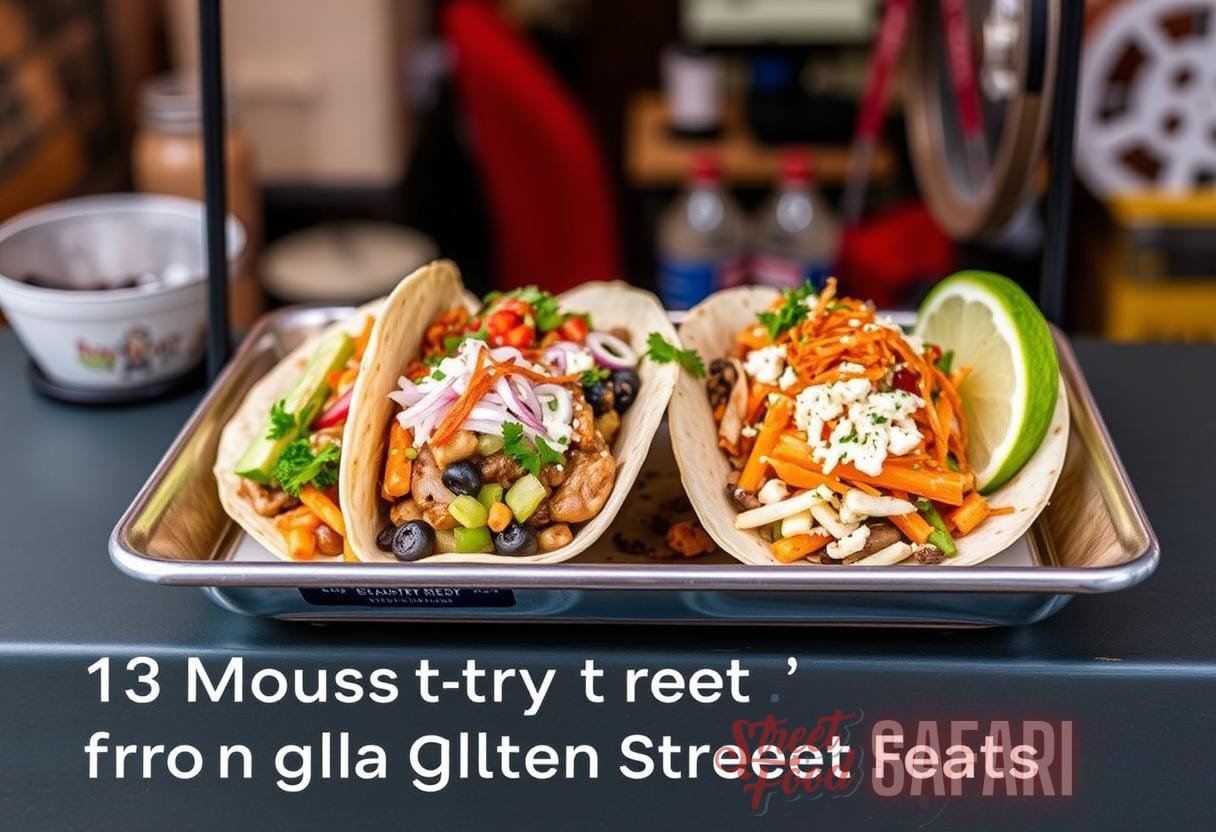Introduction
Street eats have become an integral part of urban cultures all around the world. These delectable bites offer not only a convenient and affordable option for a quick meal on the go but also a diverse and flavorful experience that reflects the cultural fabric of a city. Unearthing the enigmatic histories behind these street eats reveals fascinating insights into their origins, evolution, and cultural significance.
The Origins of Street Eats
The concept of street food can be traced back to ancient civilizations, where vendors would sell cooked food and snacks to passersby on the streets. The Romans had a thriving street food culture, with fast-food joints called “thermopolia” serving hot meals to the masses. In Asia, street food has been a part of the culinary landscape for centuries, with bustling night markets and food stalls offering a wide array of dishes.
During the Middle Ages, street food became more prevalent in Europe, as peasants and traders relied on street vendors for affordable and convenient meals. In the 19th century, industrialization and urbanization led to the rise of street food as a staple of city life. Workers sought out these street eats during their breaks, allowing them to enjoy a satisfying meal without venturing too far from their workplaces.
Today, street eats can be found in cities all over the world, showcasing a fusion of traditional and modern flavors, reflecting the cultural diversity and culinary innovation of their respective regions.
Street Eats as a Cultural Significance
Street eats not only satisfy your taste buds but also offer a glimpse into the culture and history of a place. These humble and unpretentious dishes often carry the legacy of generations, preserving traditional recipes and cooking techniques that have been passed down through families.
When you indulge in street eats, you are experiencing the authentic flavors of a region, connecting with its people, and immersing yourself in its cultural tapestry. Street food is a significant part of a city’s culinary identity, reflecting the local ingredients, cooking methods, and unique flavor combinations that have developed over time.
Moreover, street eats are often associated with street vendors who are embedded within the social fabric of a community. These vendors not only provide sustenance and livelihood but also contribute to the vibrancy and dynamism of a neighborhood. Street food creates a sense of togetherness, as locals and visitors alike congregate at food stalls and share stories, creating lasting memories and connections.
The Evolution of Street Eats
Street eats have come a long way from their humble beginnings, undergoing significant changes and adaptations over the years. The evolution of street eats can be attributed to several factors:
Globalization and Migration
The process of globalization has had a profound impact on the culinary landscape, leading to the fusion of different cuisines and the introduction of new flavors and ingredients. As people migrate from one country to another, they bring with them their culinary traditions and adapt them to the local tastes and ingredients. This cross-pollination of cultures has given rise to innovative street eats that blend different culinary traditions, resulting in unique and exciting flavor profiles.
Urbanization and Modernization
The rapid urbanization and modernization of cities have also contributed to the evolution of street eats. As cities grow and develop, so do the tastes and preferences of their residents. With the advent of technology and social media, street vendors now have access to a wider audience and can experiment with new recipes and techniques. This has given rise to a new wave of street eats that are influenced by global food trends and cater to the changing demands of urban dwellers.

Health and Safety Regulations
With the increasing emphasis on health and safety, street eats have had to adapt to comply with stricter regulations. Vendors now have to meet certain hygiene standards and obtain the necessary permits and licenses to operate. This has led to improvements in food safety practices and the overall quality of street eats, ensuring that consumers can enjoy their favorite dishes with peace of mind.
The Cultural Significance of Street Eats Around the World
Street eats vary greatly from one region to another, reflecting the unique culinary traditions and cultural practices of each place. Let’s take a closer look at the cultural significance of street eats in different parts of the world:
Asia
Asia is renowned for its vibrant street food scene, with bustling night markets and food stalls lining the streets. Street eats in Asia are an integral part of the local culture, reflecting the region’s rich culinary heritage and traditions. In countries like Thailand, Vietnam, and Malaysia, street food is deeply ingrained in the social fabric, with locals and tourists flocking to food stalls to savor dishes like pad Thai, banh mi, and nasi lemak.
Asian street eats often highlight the use of fresh and aromatic ingredients, bold flavors, and complex spice blends. The dishes are prepared right in front of you, ensuring that you get a taste of the region’s authentic flavors and culinary techniques. From steaming bowls of noodles to sizzling grilled seafood, Asian street eats offer a sensory experience that transports you to the bustling streets of Asia.
For more insights into the global street flavor revolution, check out this Wikipedia article.
Europe
Europe has a diverse and vibrant street food culture, with each country offering its own unique specialties. Food markets and street festivals are a common sight in cities like London, Berlin, and Madrid, where vendors showcase their culinary creations to eager food enthusiasts.
In countries like Italy and Spain, street eats go beyond fast food and are an essential part of everyday life. Locals gather at food carts and stalls to grab a quick bite or socialize over a plate of bruschetta or paella. In Eastern Europe, street food takes on a different form, with vendors selling traditional dishes like pierogi in Poland or langos in Hungary.
European street eats are often influenced by local ingredients and culinary traditions, offering a unique gastronomic experience that highlights the region’s cultural diversity.
Africa
African street eats are a reflection of the continent’s rich culinary heritage and diverse cultures. From the bustling streets of Marrakech, where the aroma of grilled kebabs fills the air, to the vibrant markets of Lagos, where vendors sell tantalizing jollof rice, street food in Africa is a celebration of flavors and traditions.
Each region in Africa has its own unique street food specialties. In West Africa, dishes like suya, a spicy grilled meat skewer, and akara, deep-fried bean fritters, are popular street eats. In North Africa, you’ll find street vendors selling falafel and shawarma, influenced by the region’s Arab and Mediterranean influences.
African street eats often highlight the use of local ingredients and traditional cooking techniques, offering a taste of the continent’s vibrant culinary heritage.

The Americas
The Americas are home to a rich and diverse street food culture, with each country offering its own signature dishes. From the savory empanadas of Argentina to the mouthwatering tacos of Mexico, street food in the Americas is a reflection of the region’s multicultural heritage.
In North America, food trucks have become a popular way to experience street eats, with vendors serving everything from gourmet burgers to artisanal ice cream. In South America, street food markets like La Boqueria in Buenos Aires and Mercado de San Miguel in Lima offer a sensory overload of flavors and aromas.
American street eats are often influenced by a melting pot of culinary traditions, resulting in unique and delicious creations that cater to a wide range of tastes.
The Impact of Street Science on Street Eats
Street science plays a crucial role in the evolution and innovation of street eats. It combines culinary creativity with scientific principles to push the boundaries of flavor, texture, and presentation. Here are some ways street science is making an impact:
Ingredient Innovations
Street science allows chefs and food vendors to experiment with new and innovative ingredients. From molecular gastronomy techniques that transform familiar ingredients into surprising textures to the use of locally sourced and sustainable ingredients, street science opens up a world of possibilities for creating unique and exciting street eats.
Technological Advancements
Advancements in technology have revolutionized the street food industry, making it easier for vendors to experiment with new recipes and techniques. From high-tech kitchen equipment to mobile ordering apps, technology has transformed the way street eats are prepared, served, and enjoyed.
Food Safety and Quality
Food safety is a top priority for street vendors and consumers alike. Street science has played a crucial role in improving food safety practices and ensuring the quality of street eats. From the development of new food preservation techniques to the implementation of stricter hygiene standards, street science has elevated the overall safety and quality of street food.
For more insights into the impact of street science on street eats, check out this Street Food Safari article.
Conclusion
Unearthing the enigmatic histories of street eats reveals the fascinating origins and cultural significance of these delectable bites. From their humble beginnings in ancient civilizations to their evolution as a vibrant part of urban cultures, street eats offer not only a convenient and affordable option for a quick meal but also a culinary journey that reflects the diverse flavors and traditions of a region.
Whether you’re savoring a bowl of spicy noodles in Asia or indulging in a mouthwatering taco in the Americas, street eats provide a sensory experience that connects you with the culture, history, and people of a place.
So next time you find yourself strolling through the streets of a new city, follow the delicious aromas and vibrant colors that lead you to street eats. Take a bite, immerse yourself in the flavors, and uncover the enigmatic history of these humble and extraordinary dishes.


